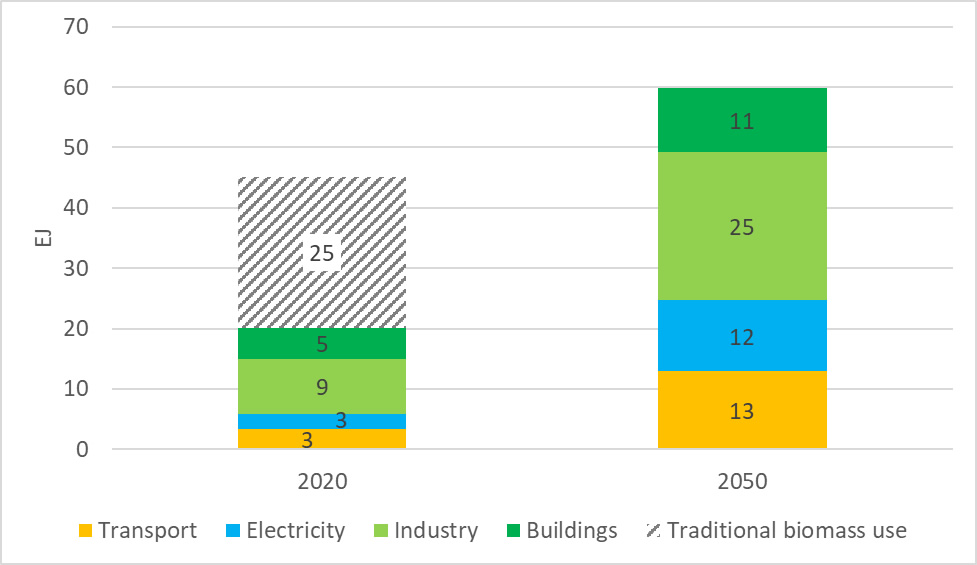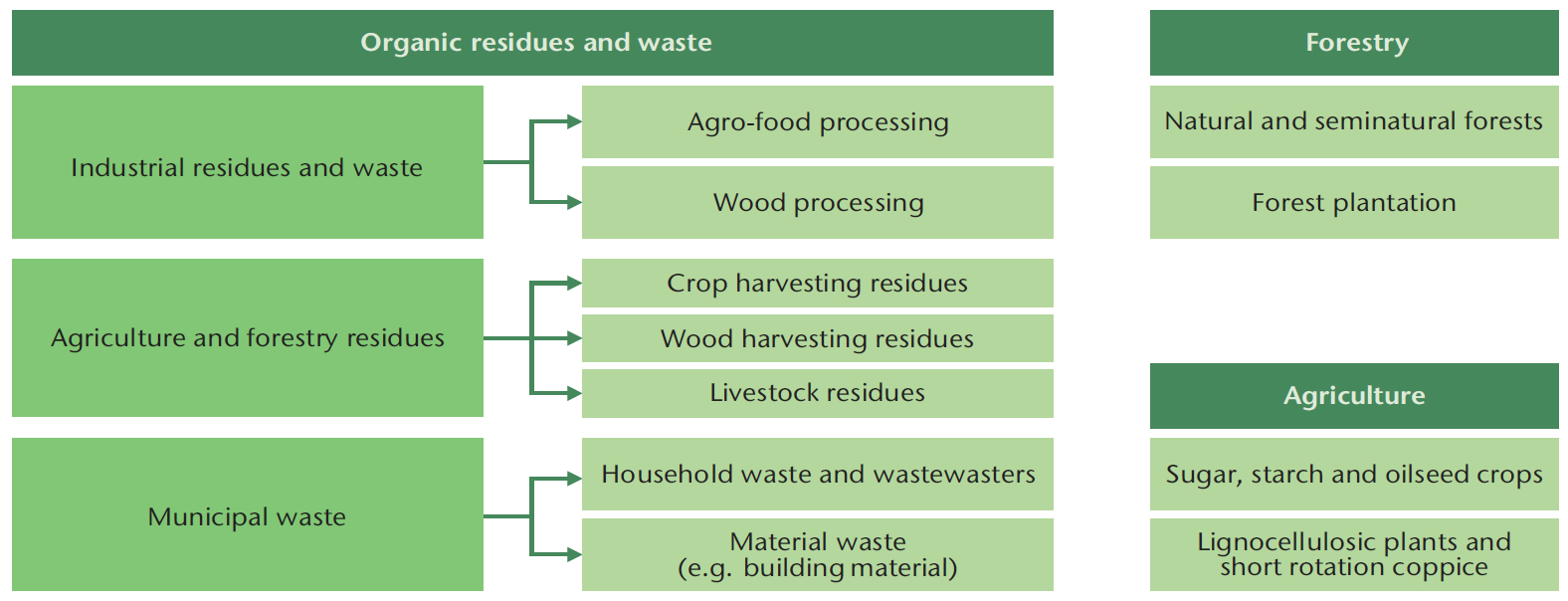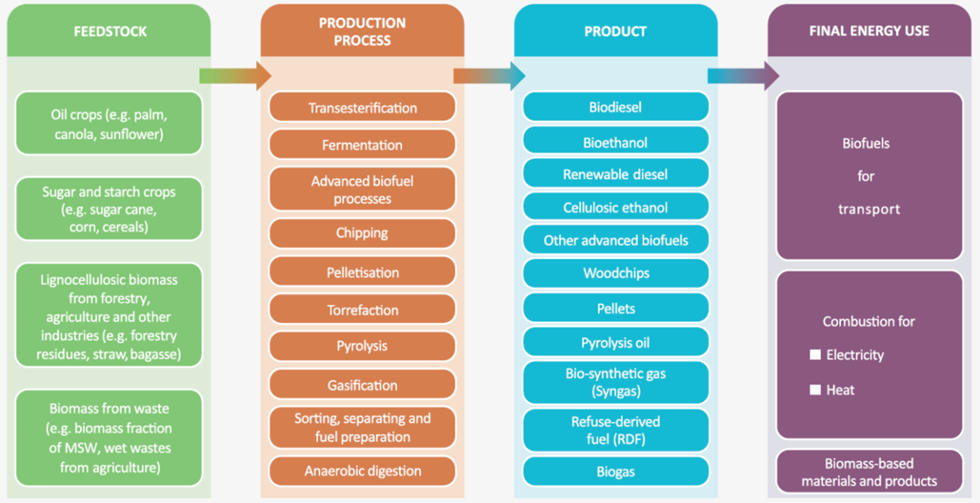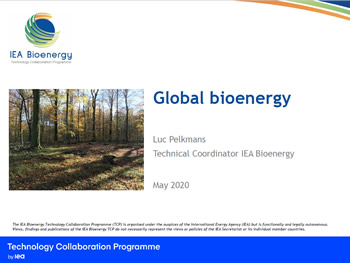Bioenergy, a sustainable solution
Bioenergy is renewable energy derived from biomass. Biomass is defined as biological material which is directly or indirectly produced by photosynthesis. Examples are wood and wood residues, energy crops, crop residues, and organic waste/residues from industry, agriculture, landscape management and households. The biomass is converted to solid, liquid or gaseous fuel which can be used to produce heat and/or electricity, or can be used as transport fuel.
Bioenergy is the main source of renewable energy today, contributing to energy used in power generation, heat for industry and buildings, and for transport. International Energy Agency (IEA) modelling indicates that modern bioenergy is an essential component of the future low carbon global energy system if global climate change commitments are to be met.

Growth of bioenergy in global final energy consumption by sector, according to the IEA Net Zero by 2050 scenario (data source: IEA (2021) Net Zero by 2050)
Some key features of bioenergy:
- Available now
- Applicable in all energy sectors (electricity, direct heat, transport)
- Readily integrated with existing infrastructure
- Storable – it can support expansion of intermittent renewables
- It can deliver negative emissions when linked to Carbon Capture & Storage (CCS): BECCS / Bio-CCS
Bioenergy contributes to climate change mitigation when:
- Biomass is grown sustainably or based on waste/residues
- Converted to energy products efficiently
- Used to displace GHG-intensive fuels
Bioenergy encompasses many potential feedstocks, conversion processes and energy applications. It interacts strongly with the agriculture, forestry and waste management sectors, and its prospects are linked to the growth of a broader bioeconomy. Bioenergy can only expand if supplied and used in a sustainable manner.

Multiple sources of biomass. Source: IEA ETP 2017
There are many bioenergy routes which can be used to convert a range of raw biomass feedstocks into a final energy product. Technologies for producing heat and power from biomass are already well developed and competitive in many applications, as are some routes to biofuels for transport. A wide range of conversion technologies are under development, offering prospects of improved efficiencies, lower costs and improved environmental performance.

Overview of bioenergy pathways. Source: IEA Bioenergy Roadmap, 2017
In 2017, the IEA Secretariat, in close collaboration with IEA Bioenergy, published a bioenergy roadmap, providing the technology milestones and policy actions needed to unlock the potential of bioenergy in line with a long-term low-carbon and sustainable global energy mix: https://www.ieabioenergy.com/publications/technology-roadmap-delivering-sustainable-bioenergy/



